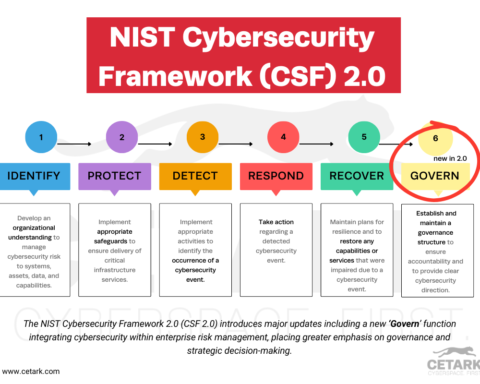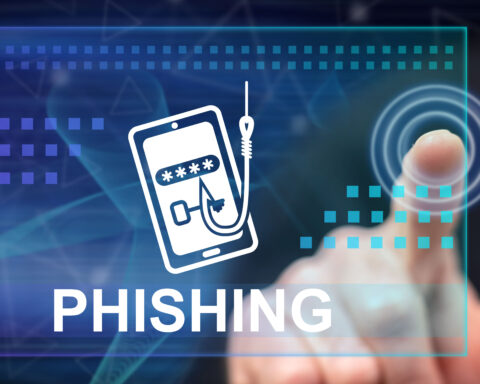As businesses become increasingly reliant on mobile devices, the security of those devices becomes increasingly important. Confident company information to customer data is at stake if these devices are not adequately secured. Here are 11 mobile device security best practices you should know.
Mobile device security has become a top concern for businesses in recent years, as the BYOD trend and the rise of remote work have increased the risk of cyber attacks for companies of all sizes. The Covid pandemic has only magnified this risk, as more employees are working remotely than ever. Businesses must protect company data by securing mobile devices from phishing scams, as email is the primary tool for adversaries to spread malware.
The following list lists the top eleven security measures you should take to ensure a safe mobile.
But first, let’s discuss the importance of mobile device security.
Approximately half of all workers currently have a mobile device at home. Mobile phones are increasingly being used to expose companies’ networks to hackers. Every day businesses are targeted and exploited by hackers seeking sensitive information that could be misused for identity or fraud. Sometimes hackers extorting money can get into small businesses by stealing data from the government.
Cybercriminals target mobiles as people do not always secure or follow safe habits. Unless you can secure your mobile networks, you could face serious problems.
1. Update Your Operating Systems (OS) Regularly
Using outdated software is highly vulnerable. Apple, Google, and Microsoft provide security updates for users that can detect security flaws anytime. Ensure you don’t lose this alert when updating your iPhone or iPad. Make sure your phone is always running the update automatically. Updated Operating systems will keep your system secure! Your software service supplier should push you regularly with the necessary software updates.
2. Turn user authentication on
Laptops and Smartphones can easily be lost and stolen, despite their presence in taxis, restaurants, and airplanes. It is essential to ensure every smartphone has a locked screen and needs a password to gain a login. It contains lots of valuable and sensitive data! Almost everyone has to Face ID and Touch ID so that access can be more accessible; however not always more secure. Whatever method you choose, make sure your device is secured by confirming your identity.
3. Remote Lock and Remote Wipe
All enterprises should be covered by a Bring Your Own Device (BYOD) Policy and Security Policy which includes strictly controlled Remote Locking and Wiping policies. Under this policy, the business can protect the device when the device is stolen. It is a bit sticky that you formally allow organizations to remove private information, as the company’s employees typically use it to work while playing.
4. When not in use, turn off both Wi-Fi and Bluetooth on mobile devices
If a user connects through a different website increases your chances of getting into a malicious network attack or hack. It is easy to intercept a computer’s traffic using a mobile device’s Wi-Fi router. Interestingly, though wireless networks are still an enormous security problem, and most of us are aware, 87% of people ignore them.
5. Turn off your location tracking settings.
Most people are unaware that their mobile devices are constantly tracking their location. This information is then stored in a database, where anyone with the right tools can access it. To protect your privacy, it’s essential to turn off your location tracking settings.
6. Encrypt your data on a mobile device
Data encryption is the process of transforming readable data into an unreadable format. The purpose of encrypting data is to protect it from unauthorized access. It is essential to have different levels or types of encryption, depending on the sensitivity of the information being encrypted. . Use a Virtual Private Network (VPN), A Virtual Private Network is a private network that uses a public network (usually the internet) to link remote locations or users. Encryption is used to secure data sent over the public network by VPNs. A Virtual Private Network is an essential security precaution when using a public Wi-Fi hotspot.
7. Download mobile apps from a trusted source
One of the most important mobile device security best practices is to only download apps from trusted sources, such as the official app store for your device. There are many malicious apps out there that can infect your device with malware or steal your personal information.
So, always download apps from a trusted source and check the reviews before installing anything on your device.
8. You should also be aware of the permissions you’re giving to apps.
A lot of times, people download apps without reading the permissions it requires. Be sure to check what kind of access an app has on your phone before you install it.
Some apps may need access to your location, camera, or contacts list. If an app doesn’t seem to need that access, be careful about downloading it.
9. Beware of Smishing and Phishing
 Smishing is a form of phishing fraud that employs text messages rather than emails. Be suspicious of unsolicited texts, even if they appear to be from a friend or family member. Never click on links or attachments in these messages. If you’re unsure whether a text is legitimate, contact the sender through another channel to confirm. Phishing is a type of online fraud that involves tricking people into revealing personal information, such as login credentials or credit card numbers.
Smishing is a form of phishing fraud that employs text messages rather than emails. Be suspicious of unsolicited texts, even if they appear to be from a friend or family member. Never click on links or attachments in these messages. If you’re unsure whether a text is legitimate, contact the sender through another channel to confirm. Phishing is a type of online fraud that involves tricking people into revealing personal information, such as login credentials or credit card numbers.
Phishing attacks can come from emails, text messages, or even phone calls. Be suspicious of unsolicited communication, even if it appears from a trusted source. Never click on links or attachments in these messages. If you’re unsure whether a message is legitimate, contact the sender through another channel to confirm.
Both smishing and phishing are becoming increasingly common as more people move their lives online. Be aware of these scams and take steps to improve email security.
9. For better mobile security, use a secure lock screen.
A lock screen helps to prevent unauthorized users from accessing your device and its contents. Various lock screens are available, such as pattern locks, PIN codes, and fingerprint scanners. Setting up a secure lock screen can help keep your mobile devices safe from unauthorized access.
10. Use a password manager
Tell me the truth, the passwords will never disappear, and it is a burden and a nightmare for many people. Not to mention they are often changed, which is very painful. Enter the password manager. It’s what I’d call an encrypted “book” of passwords that only the user is aware of and locked too. They don’t just keep the email and password secure; anyone can use the passwords without having to repeat their name for their cat. Microsoft allows users to delete passwords from their Microsoft 365 account even though they can’t delete their passwords.
11. Set up two factor-authentication
Two-factor authentication (2FA) is a form of mobile security that can be used to secure your online accounts. When you set up 2FA, you’ll usually need to supply a code delivered to your phone. This code serves as a second verification, in addition to your password, ensuring that no one else has access to your account.  While 2FA does add an extra step to the login process, it can help to prevent hackers from gaining access to your account even if they know your password. In addition, 2FA can also be used to increase the protection of other personal information such as credit card numbers and online banking login credentials. As mobile security becomes increasingly important, setting up 2FA is an excellent way to help protect your online accounts.
While 2FA does add an extra step to the login process, it can help to prevent hackers from gaining access to your account even if they know your password. In addition, 2FA can also be used to increase the protection of other personal information such as credit card numbers and online banking login credentials. As mobile security becomes increasingly important, setting up 2FA is an excellent way to help protect your online accounts.
Conclusion:
While it’s essential to be aware of the best practices for securing your mobile devices, it’s also important to remember that no one is perfect. We all make mistakes from time to time, which can sometimes lead to our data or device being compromised. So don’t beat yourself up if you slip up now and then; try your best to stick to the following security tips as often as possible, and you’ll be doing much more than most people do to keep their information safe. And finally, always remember that if something does happen and your device is compromised, act fast! The sooner you take action, the better your chance of recovering any lost data or preventing further damage. Have we missed any of
Following these simple tips, you can keep your mobile device safe and secure in 2022. Thanks for reading!







